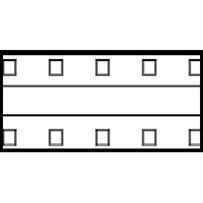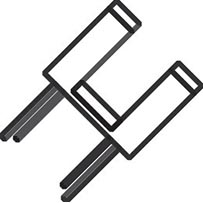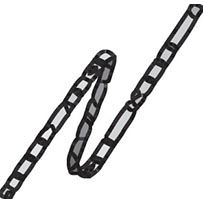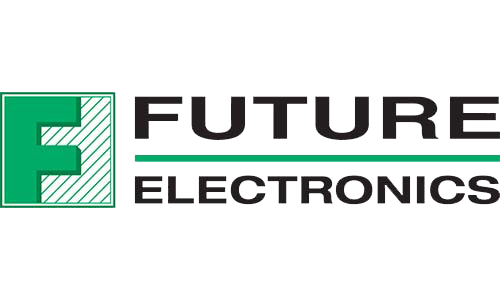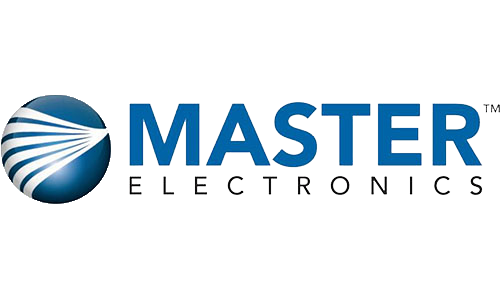Commercial planes have long used lighting to usher passengers up and down the aisle. This post takes a look at the most common systems of LEDs on board a passenger plane which are considered today’s standard for operations, safety, and passenger comfort.
Some airlines have gone further with LEDs. We’ll take a look at the experiments in commercial aviation with LED displays. You never know: one of them could become the new standard.
Onboard LEDs
LED lighting systems have become standard on aircraft because of their design versatility (not to mention their advantages in lower maintenance cost, greater energy efficiency and longer lifespan).
LEDs can be as small as an indicator light in the restroom or large and bright enough to beacon incoming planes on the airstrip. Compared to traditional lighting systems, LEDs have wide flexibility in terms of color and brightness control.
A quick tour of the inside of a standard passenger jet will find some LEDs easy to spot and some hidden away.
Not many civilians get a glimpse of the LED system inside the cockpit, where LEDs are embedded in the instrument panels and also provide overhead task lighting and general illumination. The nighttime view of the new Boeing 777 cockpit shows the extent to which light takes a cental role in pilot instrumentation and controls.
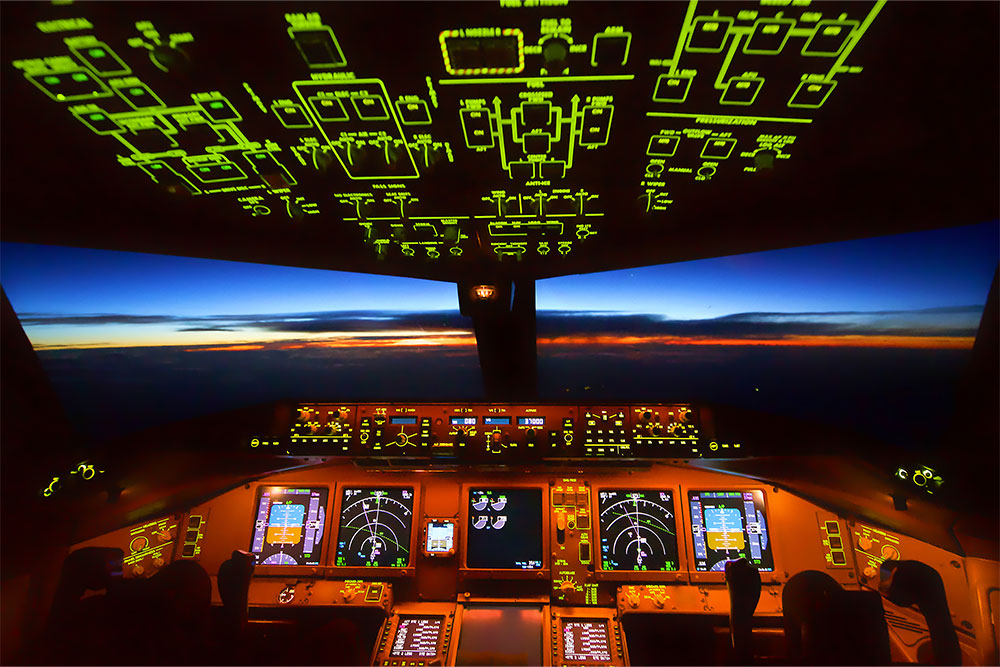
Luckily, most of us don’t get to see a passenger jet’s emergency lighting. These LEDs, generally powered by a battery independent from the plane’s main power source, include those in the floor marking an escape path, overhead or seat arm illumination, and special green lights highlighting the nearest exits for an evacuation.
Third, and likely most prominent for flyers, is interior cabin lighting. LEDs are used extensively throughout the cabin to provide a comfortable and welcoming environment for passengers.
Most cabin interiors provide individual options per seat in the form of overhead reading lights, and also different configurations of mood lighting for the overall cabin, which dim for night flights and brighten for takeoffs and landings.
Colorful Cabins
Over the last decade, the ambient lighting of the cabin has been the centerpiece of experimentation. It is now common for each airline to have an uncommon lighting scheme.
Beyond making passengers feel comfortable, the spectrum of color possibilities has become a brand canvas. Once inside the plane, there are only a few things–aside from steward uniforms and baggage fees–to set one airline apart from another. LED color lighting schemes have emerged as a memorable onboard differentiator between an airline and its competitors.
An example of some of this creative and thematic experimentation can be seen in attempts to capture visual elements of destination marketing, or the brand association of the airline, or the nationality of airline’s country of origin. For outfits like New Zealand Air, Air Emirates, or IcelandAir, they can do all three at once.
One famous example of recreating a sense of place through LEDs was IcelandAir’s Northern Lights, where a simulation of the Aurora Borealis was projected on the ceiling of the cabin. Boeing’s Sky Interior demonstration and Air Emirates also used the night sky as inspiration for planetarium-like projections that extend the length of the cabin.
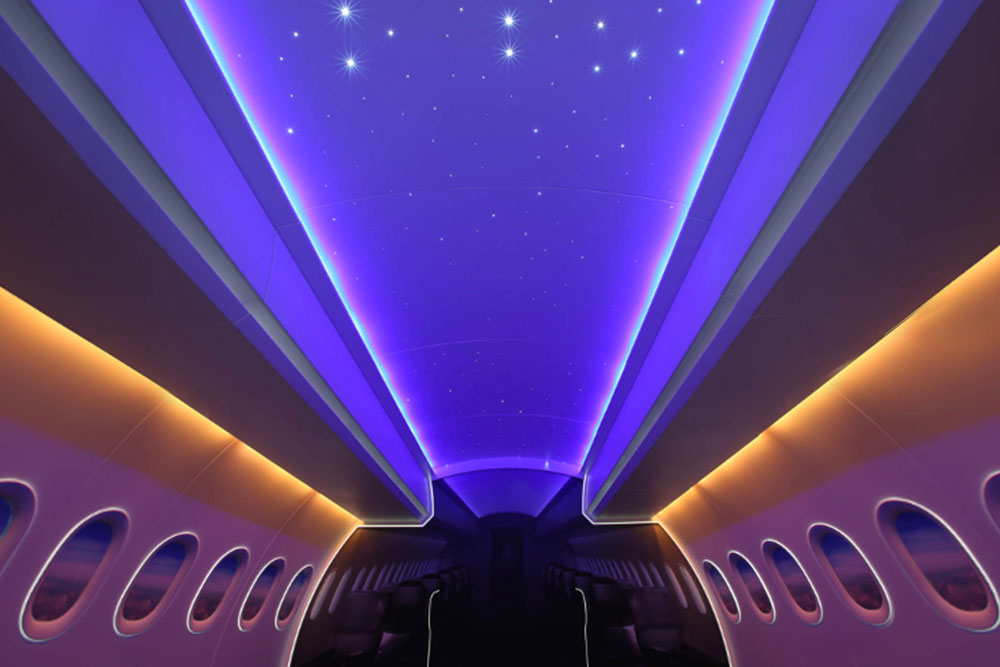
Air Emirates’ night sky. Photo Credit: Air Emirates
Another national airline, Philippine Airlines, matched the LED colors to the country’s flag. It occasionally shifted its color themes to celebrate big travel holidays.
These could be interrupted by short-clip special lighting effects like fireworks or confetti, which could be triggered by the crew. The animation might burst out during the announcement of a birthday or after the purchase of membership card program, perhaps. These surprising lighting displays grab attention and can end up on passengers’ social media. Marketing departments claim these treatments enhance the passenger experience (PaxEx) and broaden brand awareness.
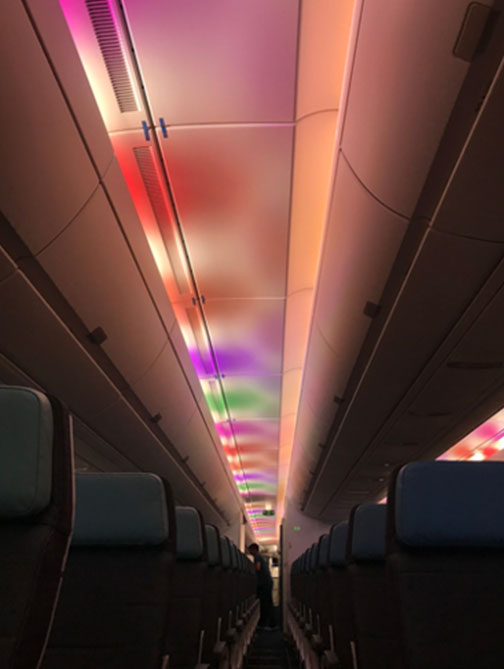
Philippine Air used colors from regional celebrations on flights Photo credit: Philippine Air
Etihad Airways, which flies out of Abu Dhabi, has over the years employed lighting to great effect, again adding details of the culture into the journey, in its case, projecting abstract geometric patterns that typify the region’s art and décor.
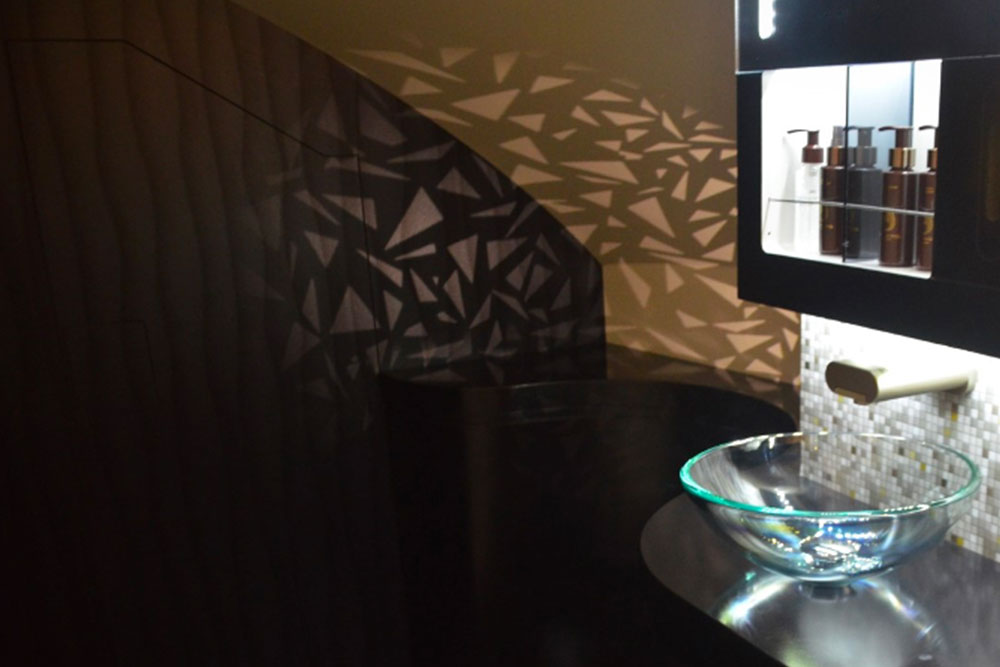
Emirates geometric projections in a A380 Airbus lavatory Photo credit: Cynthia Drescher
If anything might become a new standard it may be the calming purple end of the spectrum, which has become synonymous with catching some z’s on nighttime flights. There are plenty of long Pacific crossings from New Zealand. Its national airline’s new offering the economy-class sleeping option, called Skynest, features violet LEDs.
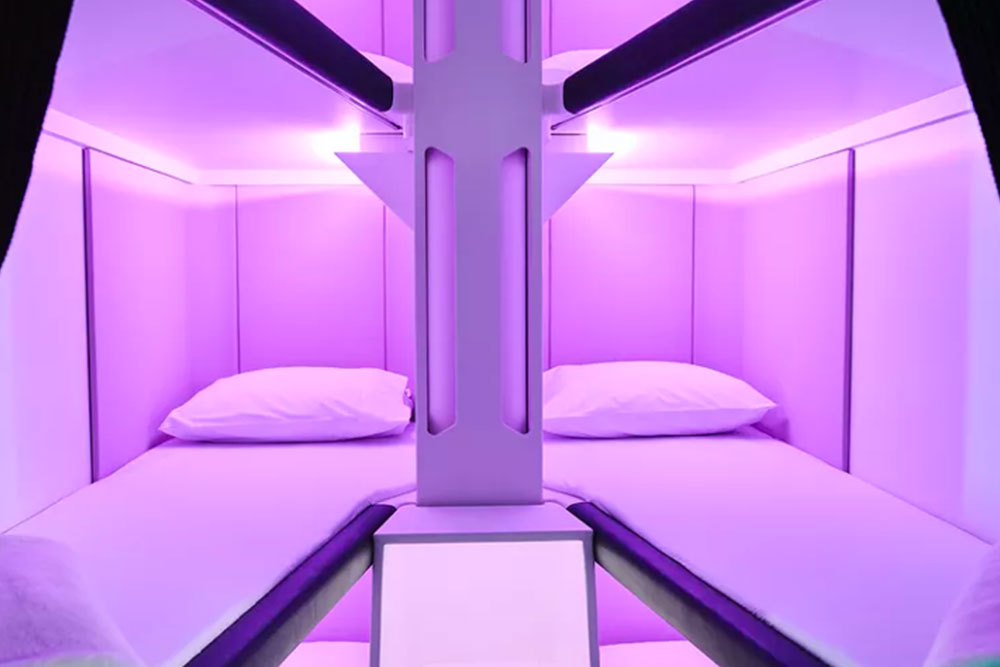
Skynest from New Zealand Air features 6 couchettes. Photo credit: New Zealand Air
As with fashion trends, the more colorful displays may seem bold for a time, but then after a while understatement seems just as bold. Some airlines have toned down the experimentation or gone back to unobtrusive lighting schemes.
At this point, cabins can have a subdued ambience or a culturally distinctive decor, as varied as there are different carriers. The experiment with onboard LEDs, however, will likely continue in the future, with smart individual settings, virtual windows, and new modes of inflight entertainment.
LED Engineering for Airlines
With all these developments in interior cabin design every few years, new engineering problems have surfaced as well. For instance, if the LED lighting scheme across the plane were installed at different times, the colors or timing of changes may be off slightly, sometimes marring the continuity of the effect.
Also, since aircraft are often leased or sold to different airlines, a way to easily trade out lighting designs was needed, without having to replace too much infrastructure. Some vendors have come forward with interchangeable retrofit LED hardware and software solutions.
Since a malfunction of a single element can turn elegant ambiance into an uneven and glitchy experience, LEDs on planes need careful attention to quality engineering, comprehensive testing on color quality, and of course the ability to meet AS9100 certification.
You can find all of these at American Bright. Feel free to consult with us for any aerospace lighting project.




